Climate made people move to America
21 November 2017
The United States of America (US) are a country of immigrants, that is, people originally from other lands who moved to the US. In the 19th century (1801–1900), over 5 million of them came from Germany. In fact, some of the most famous American family names and brands, such as Trump and Heinz, trace their origins back to Germans who moved to the US in the 19th century. In new research published in the journal Climate of the Past, scientists from the University of Freiburg (Rüdiger Glaser, Iso Himmelsbach and Annette Bösmeier) in Germany say that, during the 19th century, climate was one of the major factors that pushed people to move out of Southwest Germany and into North America. In 1816 and 1846 especially, poor climate conditions in the region resulted in bad crops, meaning that less food was available. This led to a rise in the price of cereal crops, so fewer people could afford to buy foods like wheat or rye: basic sources of carbohydrate (energy-giving) foods. The resulting hunger and poverty then drove some Germans to move out of the country. The researchers point out, however, that climate is only one piece of the puzzle. Many other factors, including wars and religious conflicts and the search for better living conditions, also influenced people’s decision to move out of Germany. “Nevertheless, we see clearly that climate was a major factor [that drove emigration in the 19th century],” says Professor Glaser. At present, there is a lot of talk about how much future climate change may force people to move to other places (that is, become refugees). As sea level rises and storms and other extreme weather events become more frequent in some places, more and more people might be forced to leave their homes and move somewhere else. The new study can shed light on how important climate can be in driving migration.Find out more
Discuss with your teacher or parents
What are climate refugees? What factors (environmental, social, political) force them to leave their home countries?
In the 19th century, how did people emigrate from Europe to America?
Find out more about climate change and how it will affect our planet and the people living in it on the National Geographic Kids website: egu.eu/721IY4.
This story shows the importance of cross-curricular studies: our learning being enhanced when science is combined with geography and history.
Print version
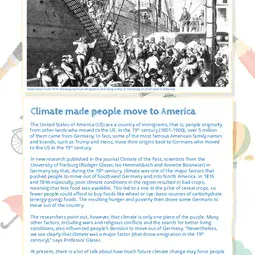
This is a kids' version of the EGU article: 'Climate made people move to America'. It was written by Bárbara Ferreira (EGU Media and Communications Manager), reviewed for scientific content by Aimée Slangen (Researcher, NIOZ, Netherlands) and Annette Bösmeier (Researcher, University of Freiburg, Germany), and for educational content by Phil Smith (Teacher Scientist Network, UK).
Translations
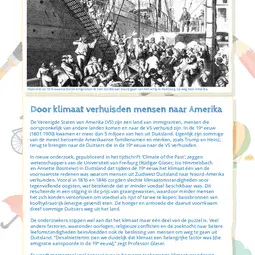
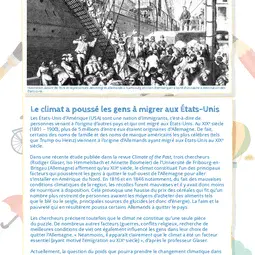


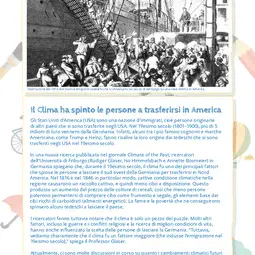

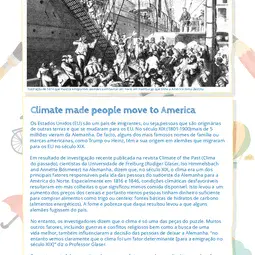


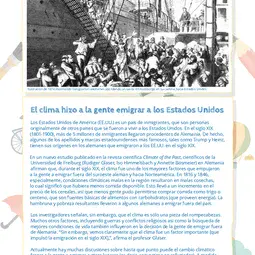

All English-language Planet Press releases are carefully edited, reviewed and proofed, by scientists, educators and EGU staff. Please note that once translated, Planet Press releases receive no further checks from EGU staff. For this reason, we cannot guarantee their accuracy, though we trust the quality of our voluntary translators and are grateful for their work.

